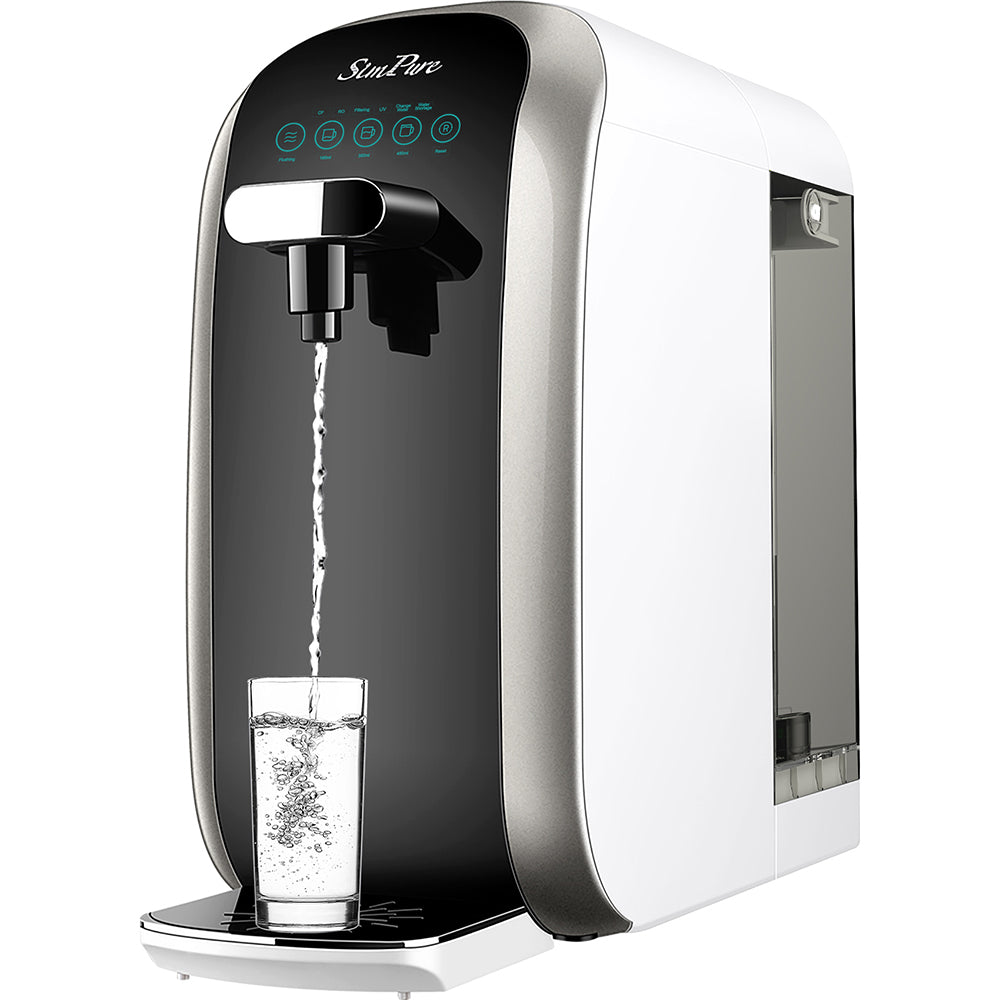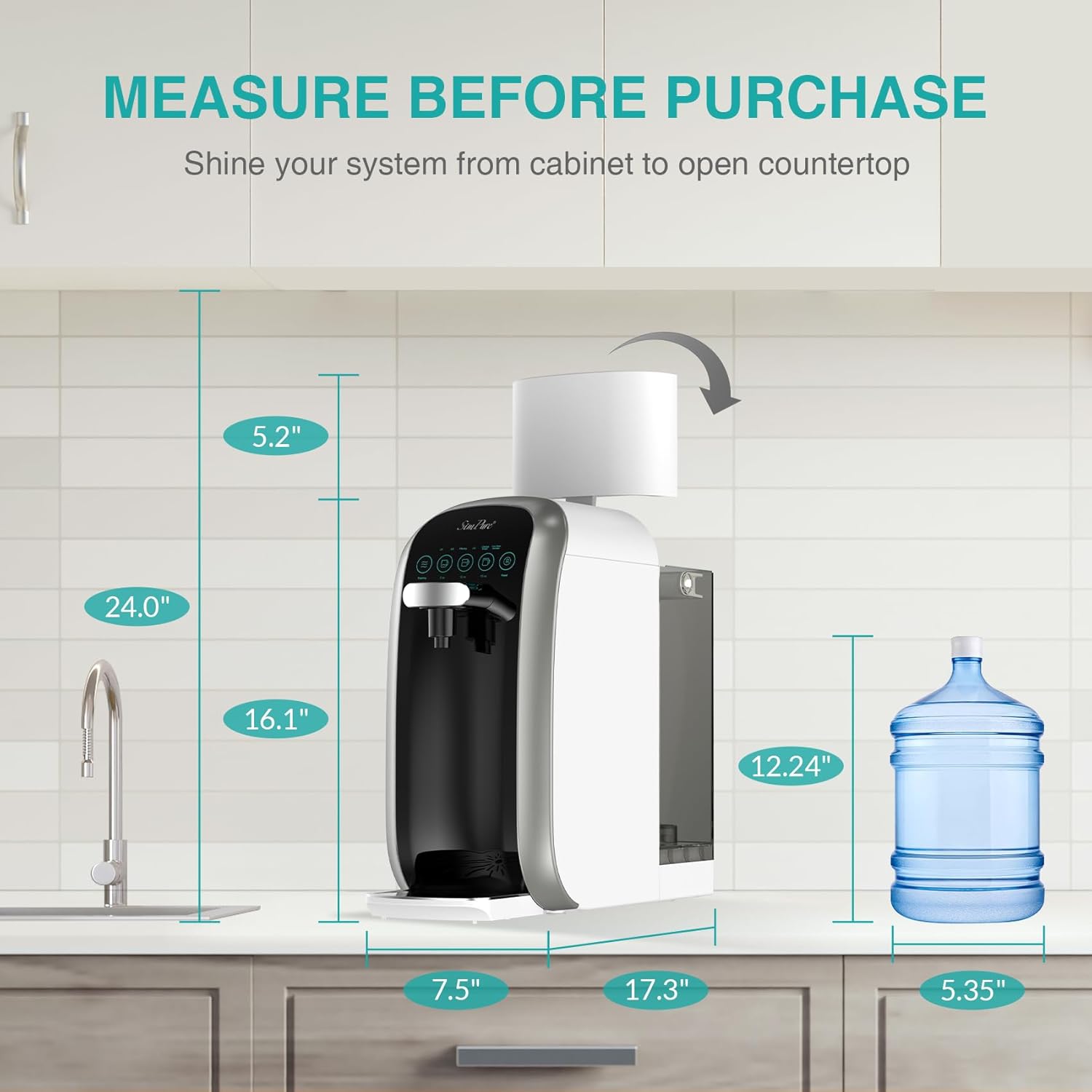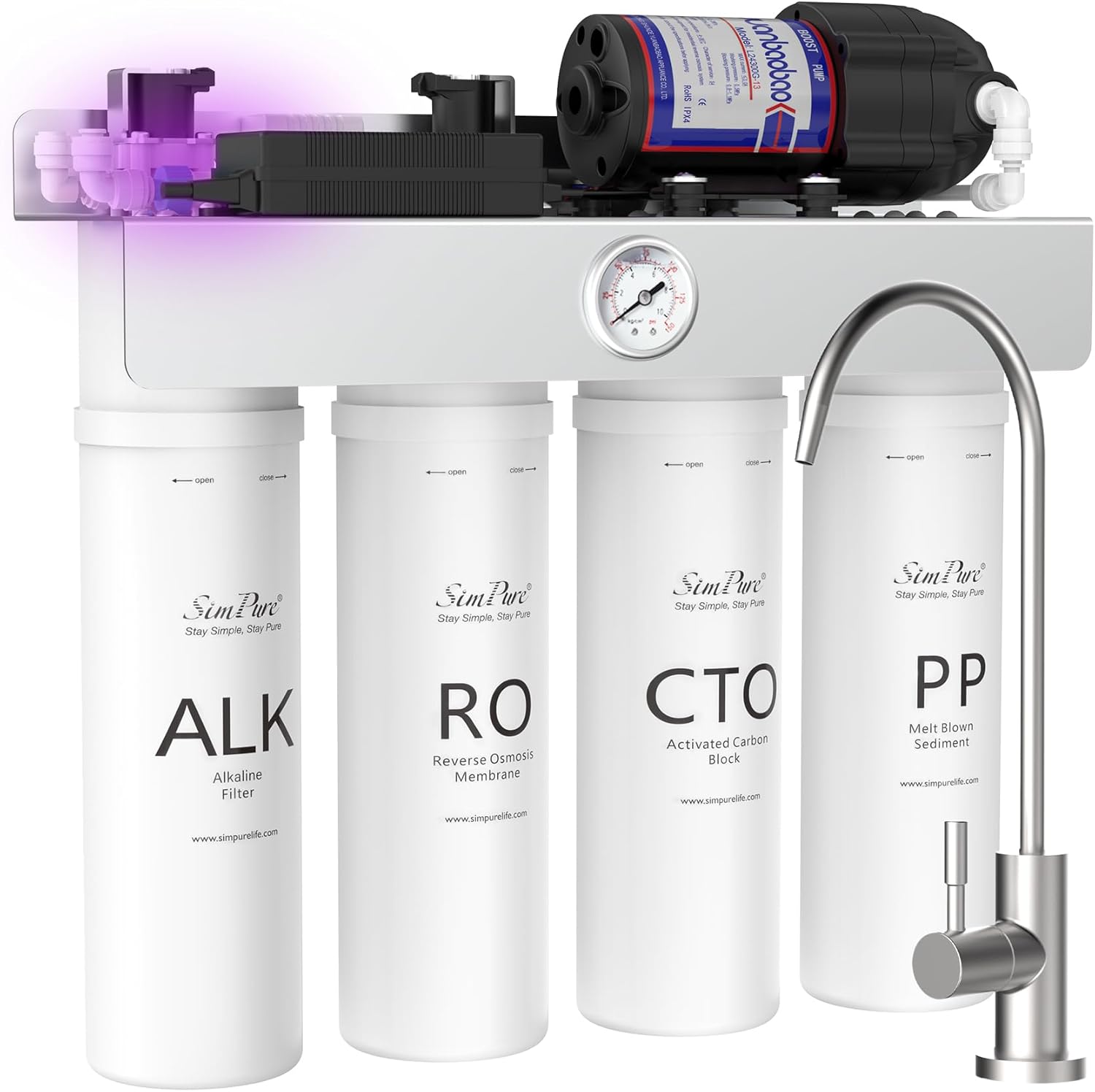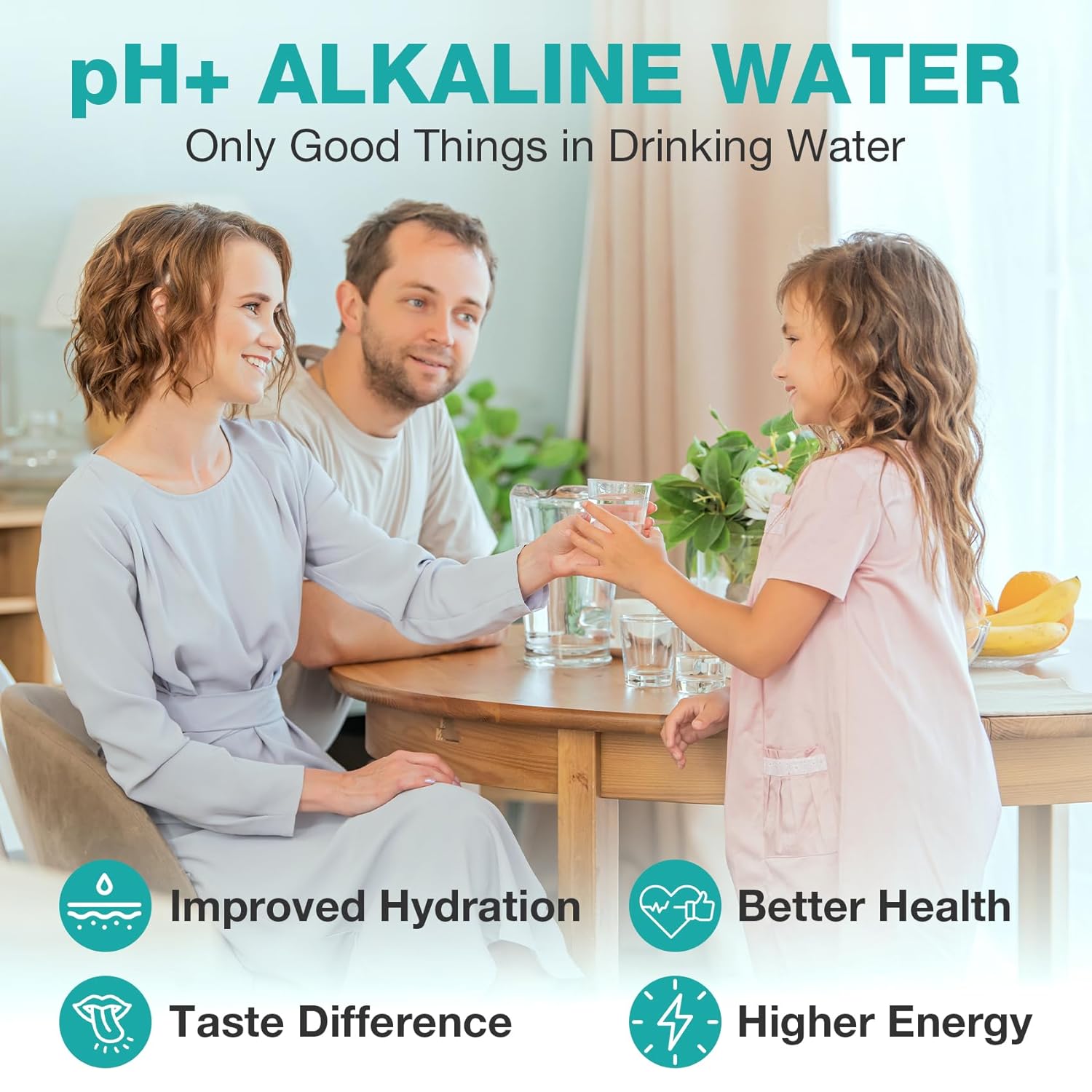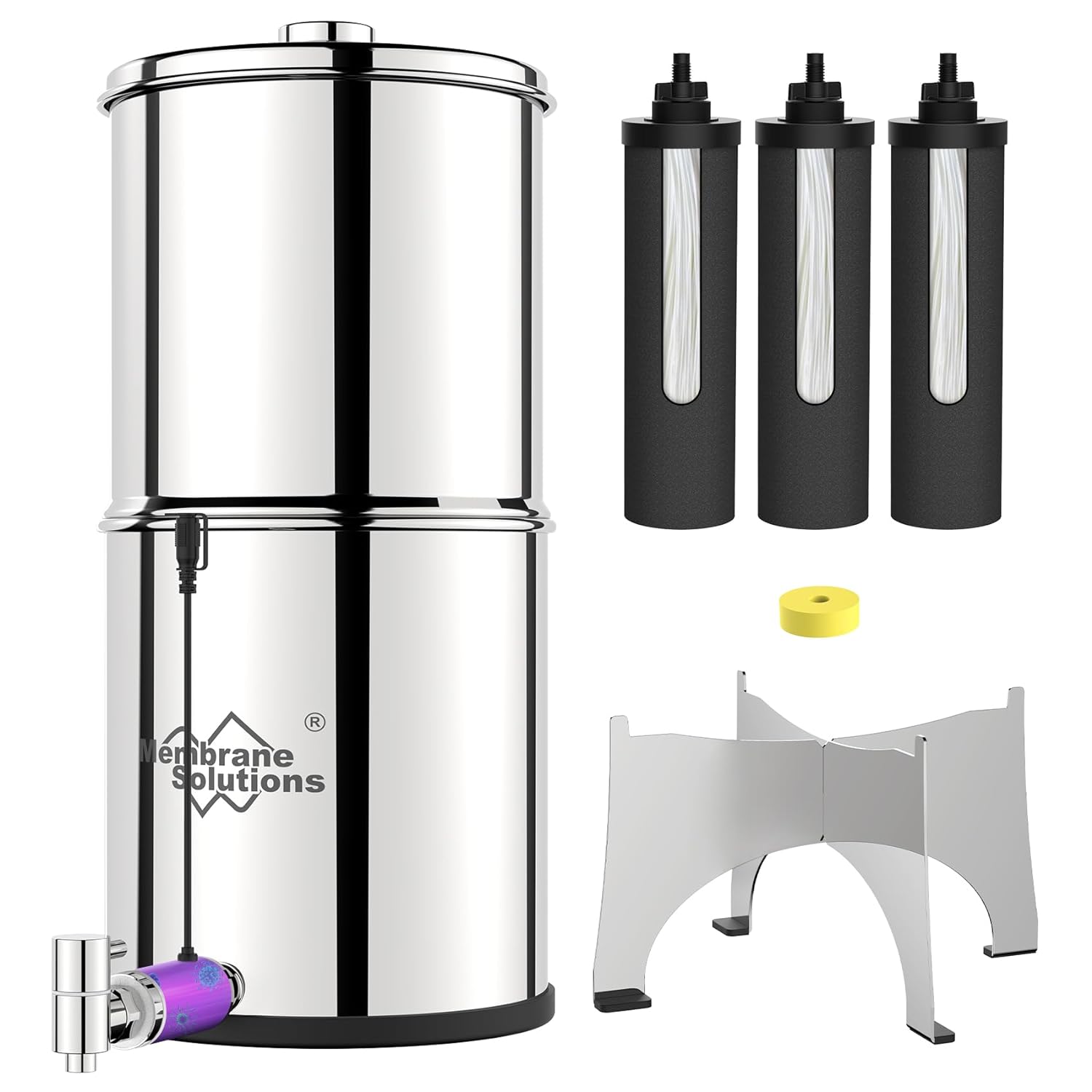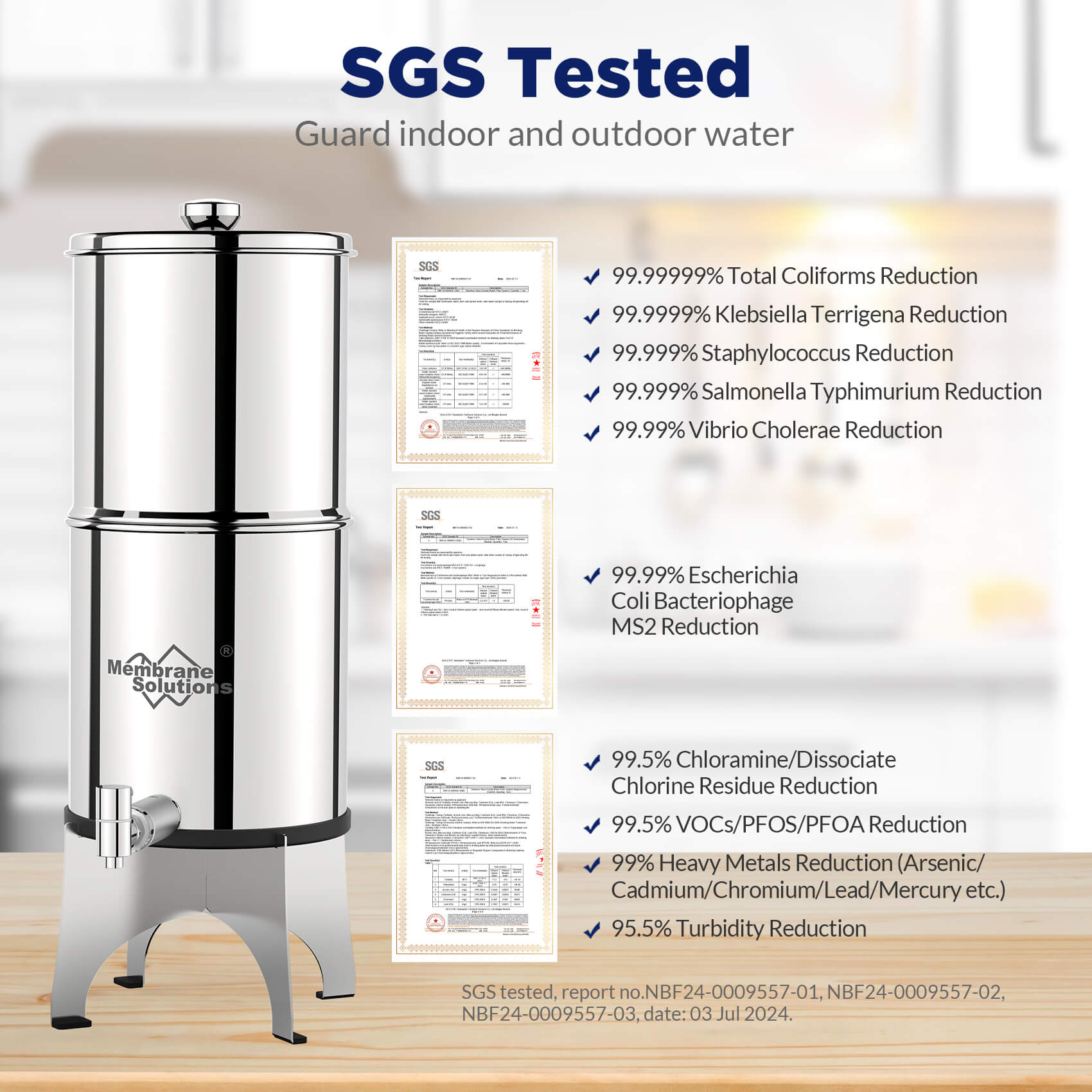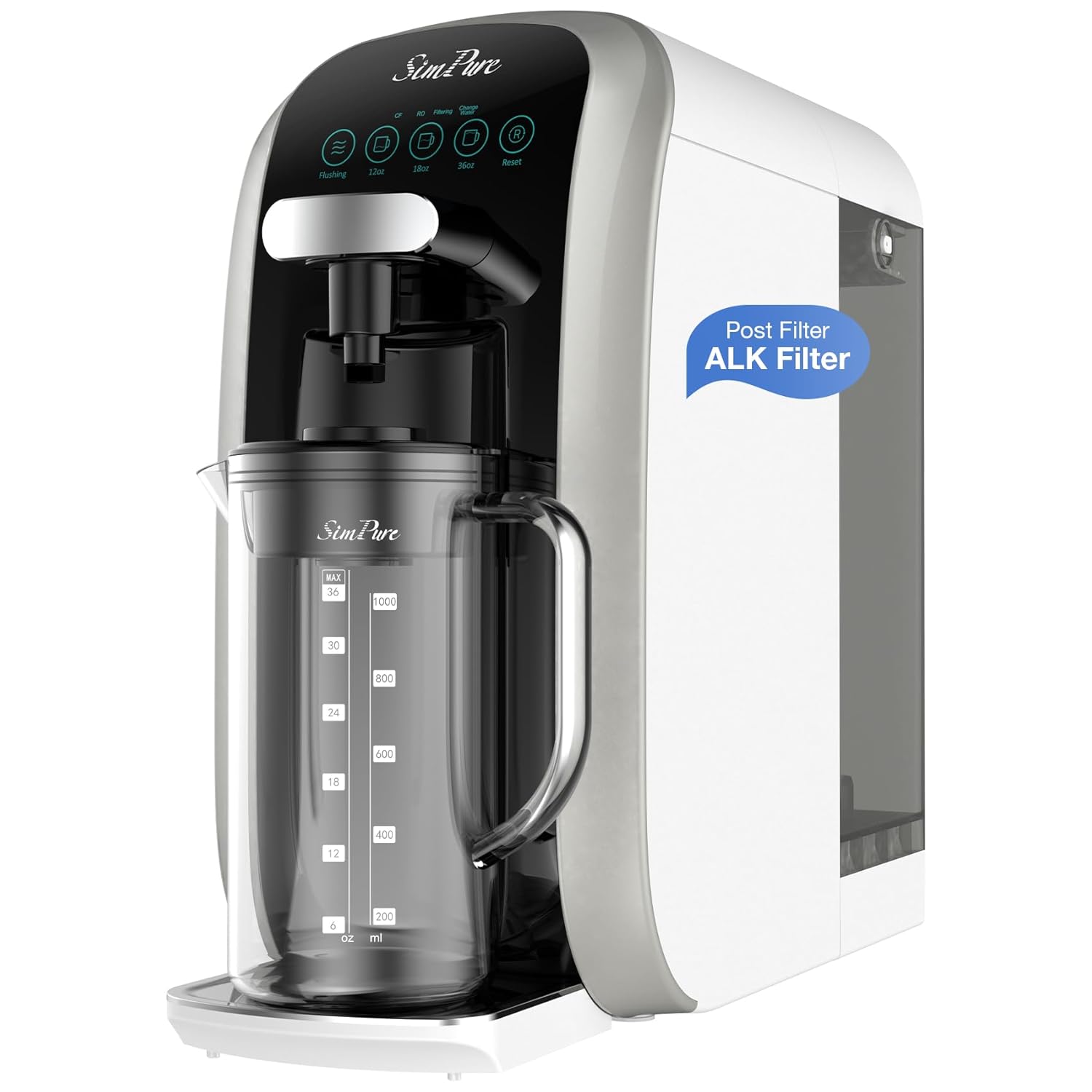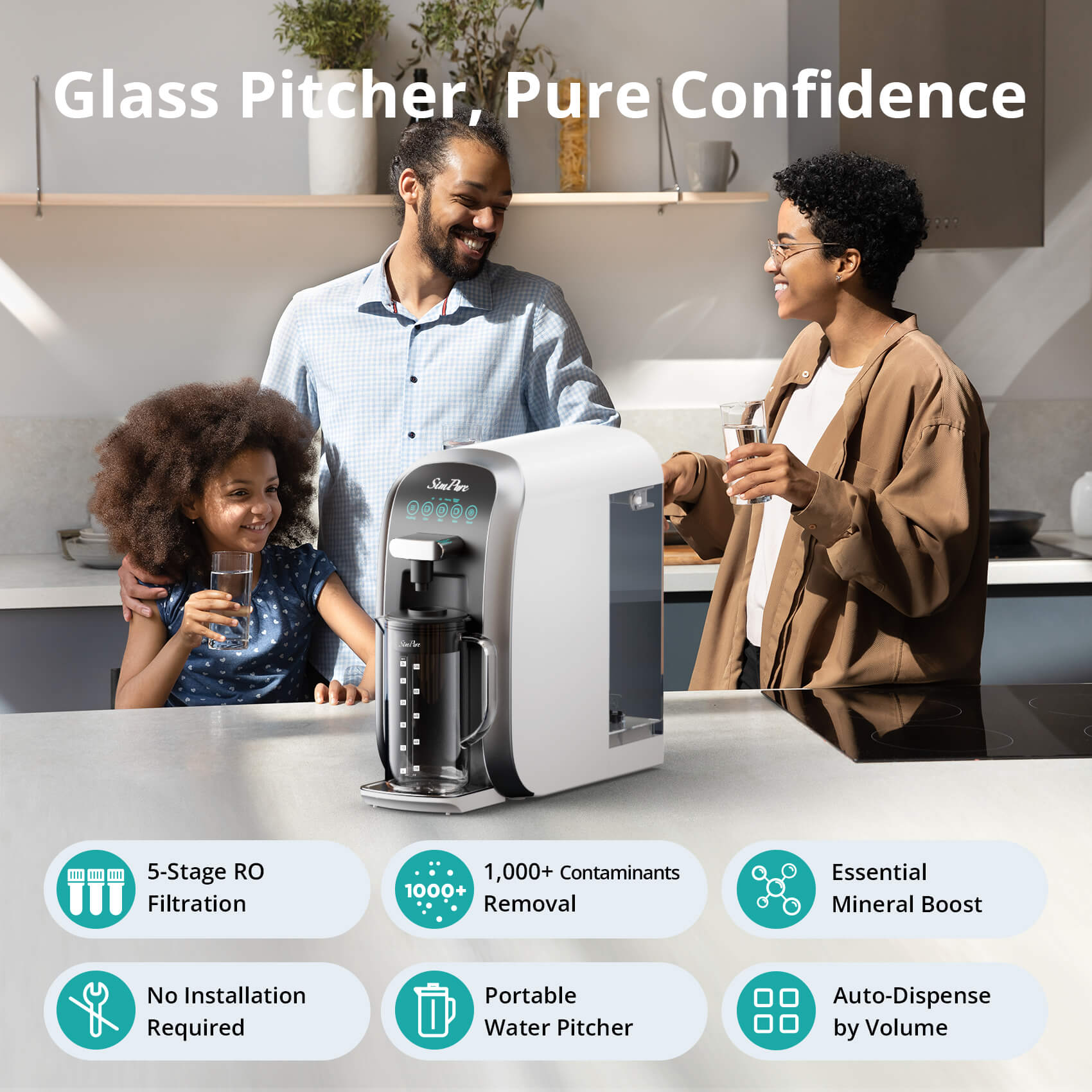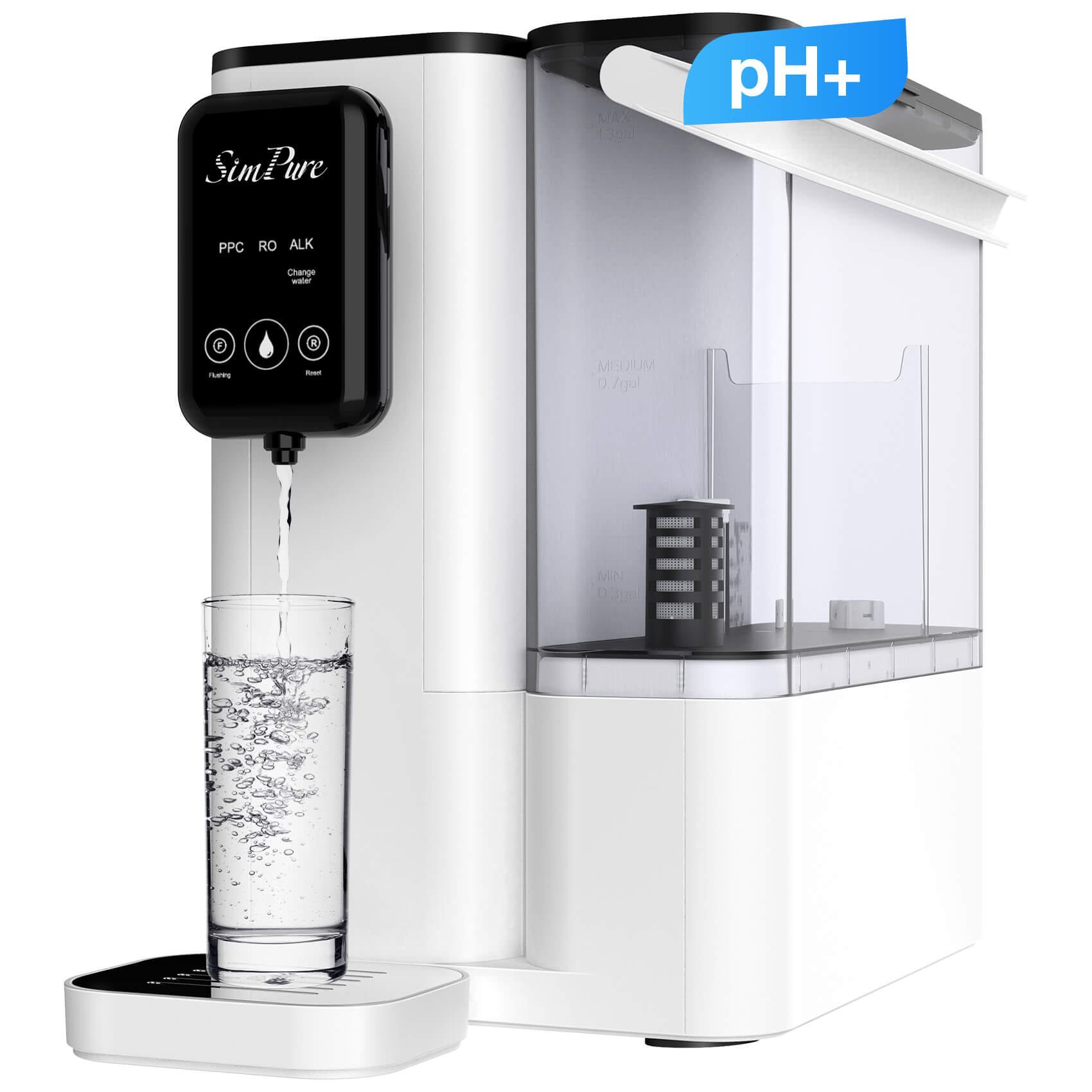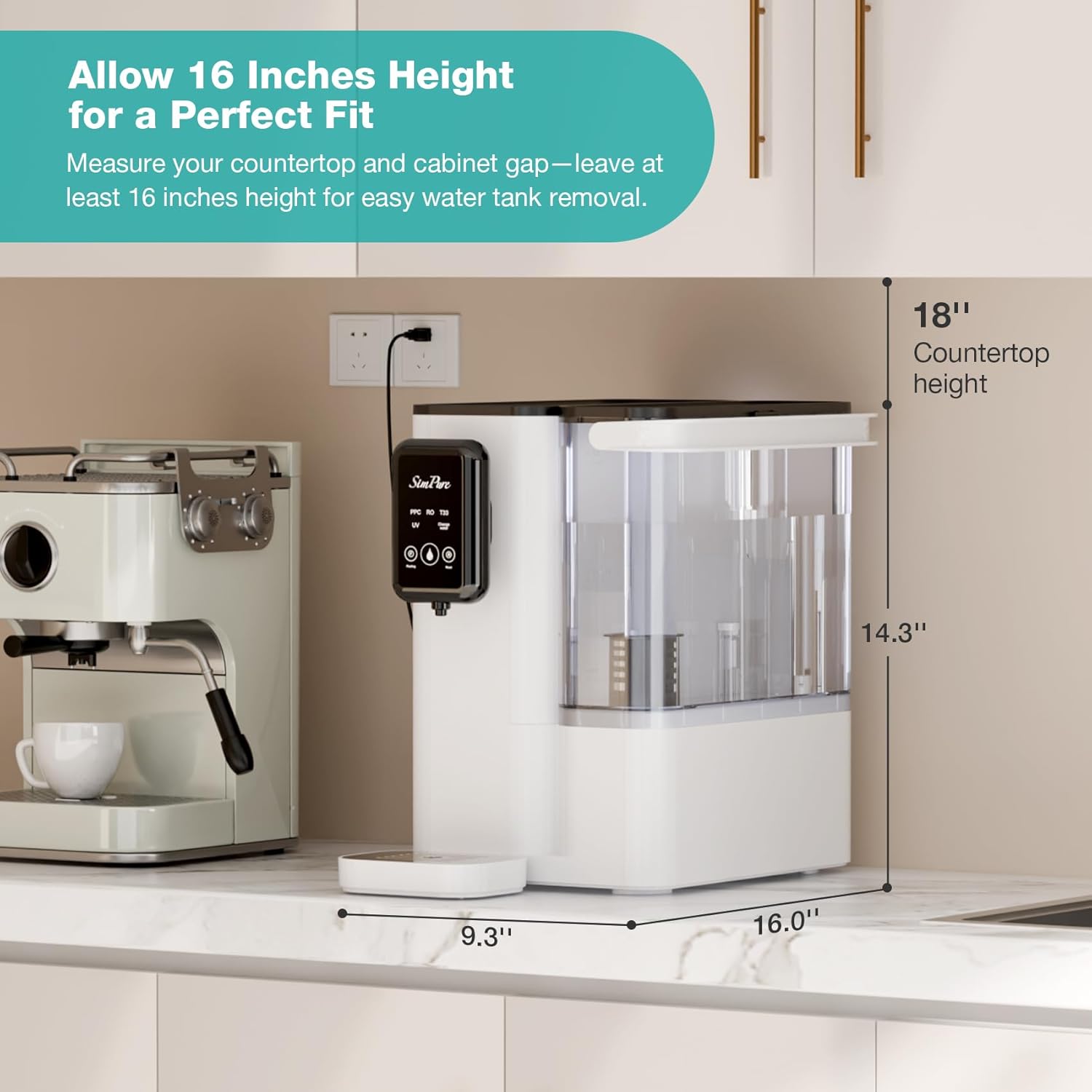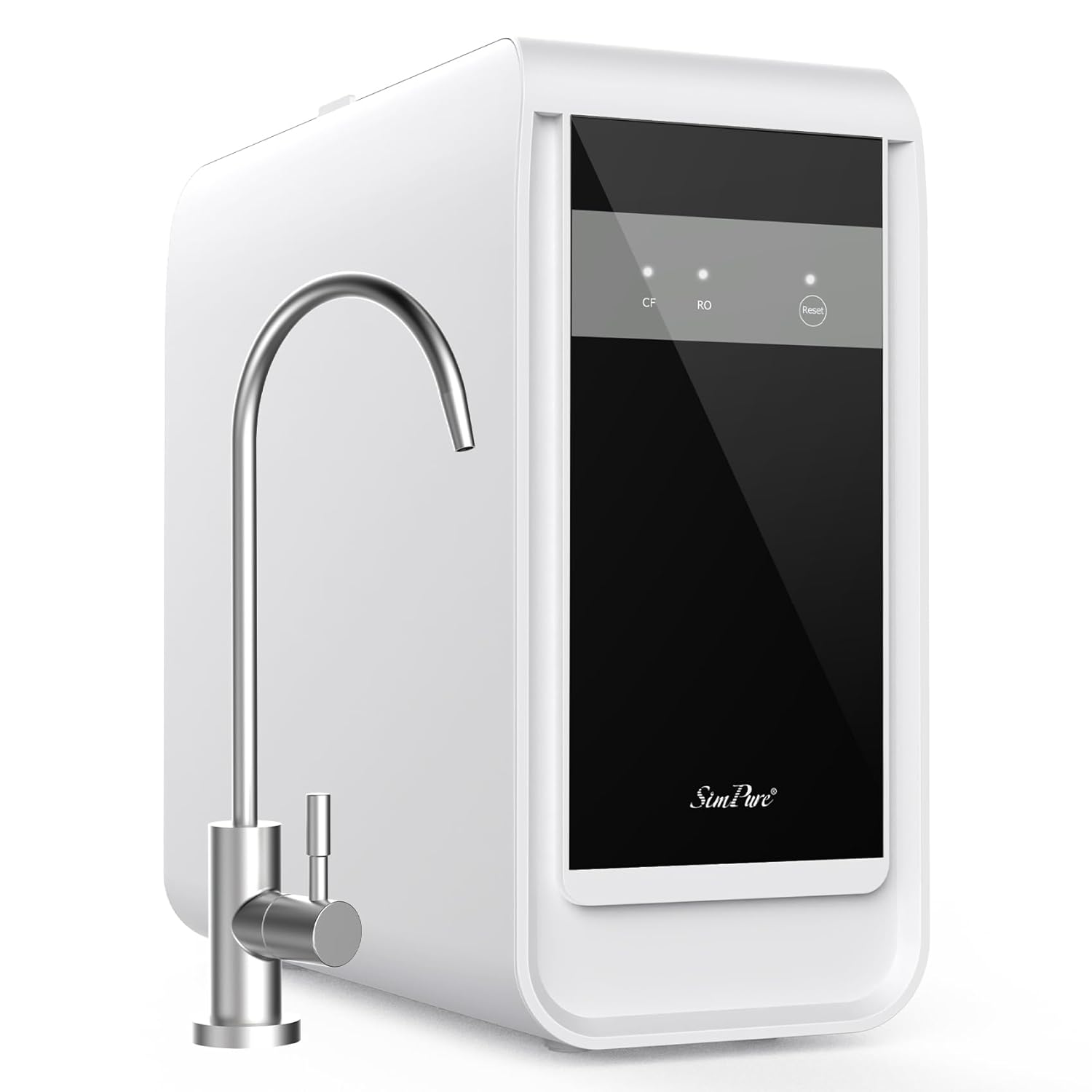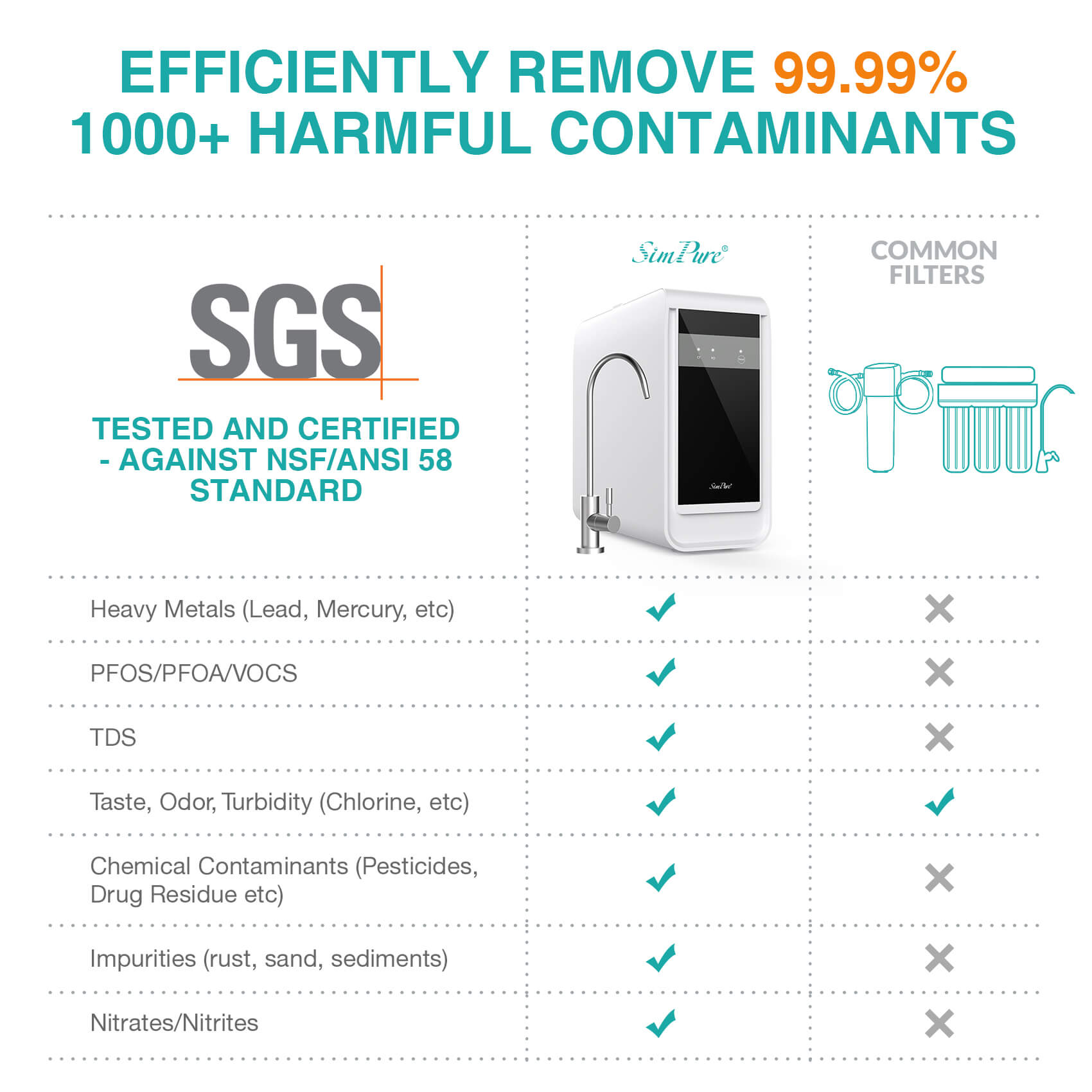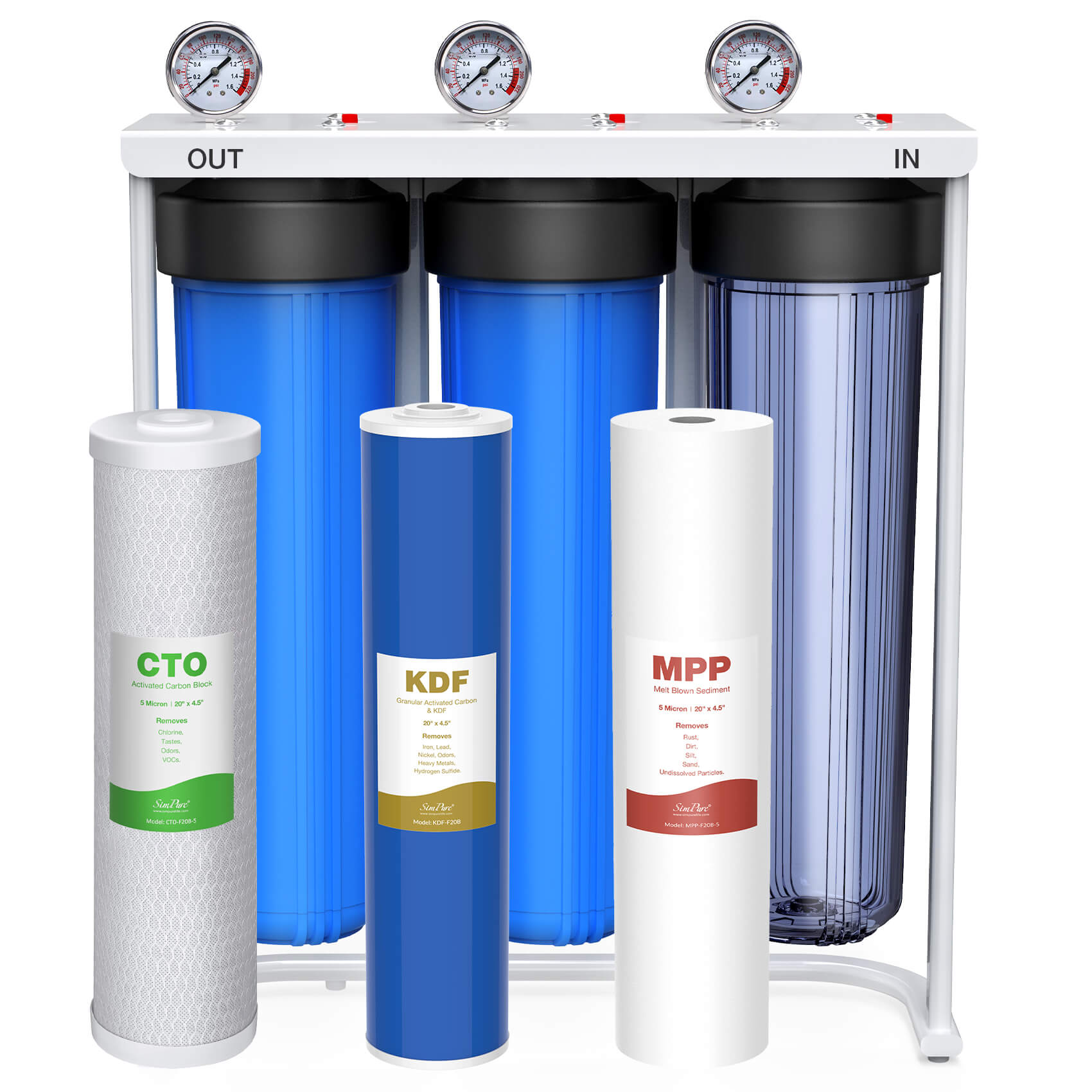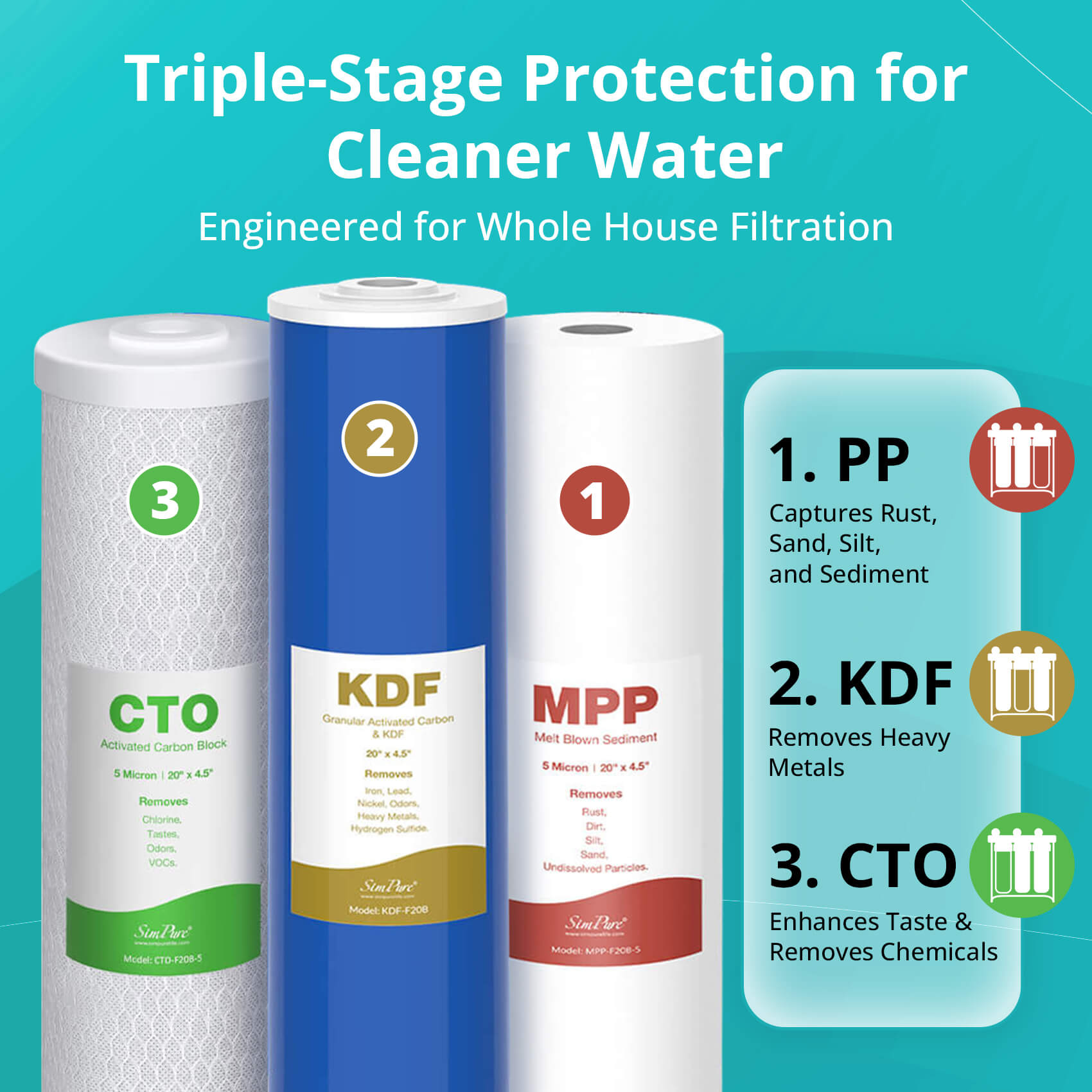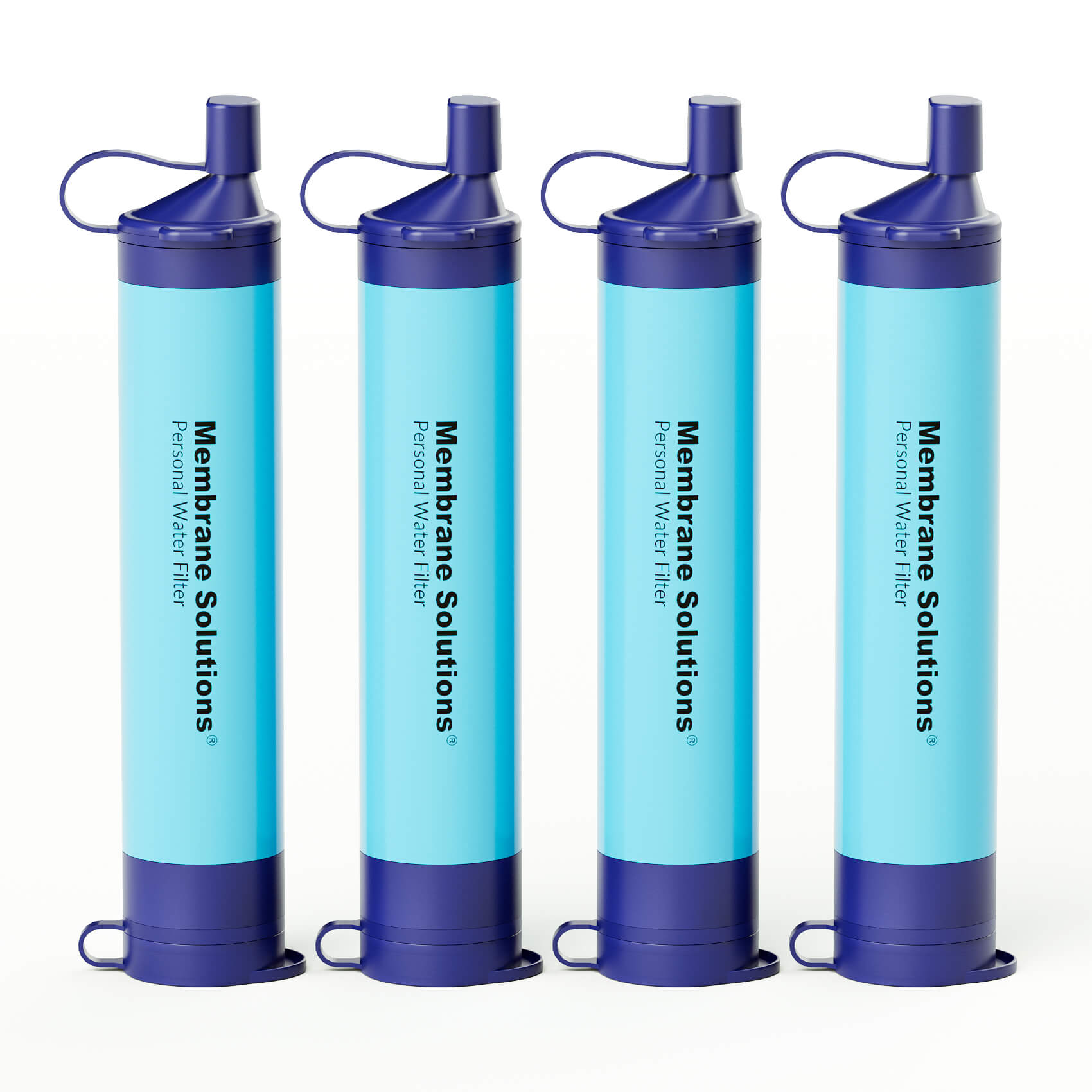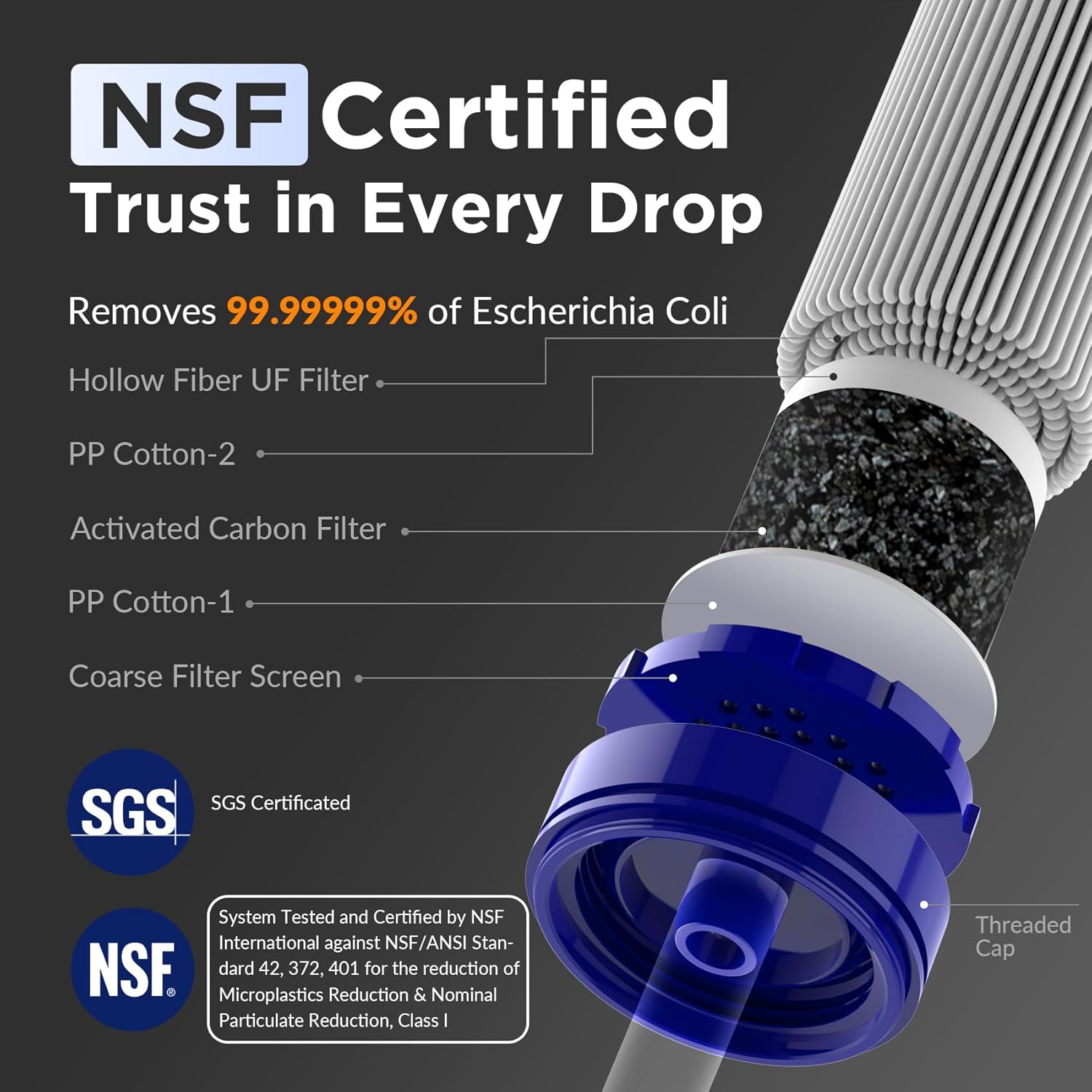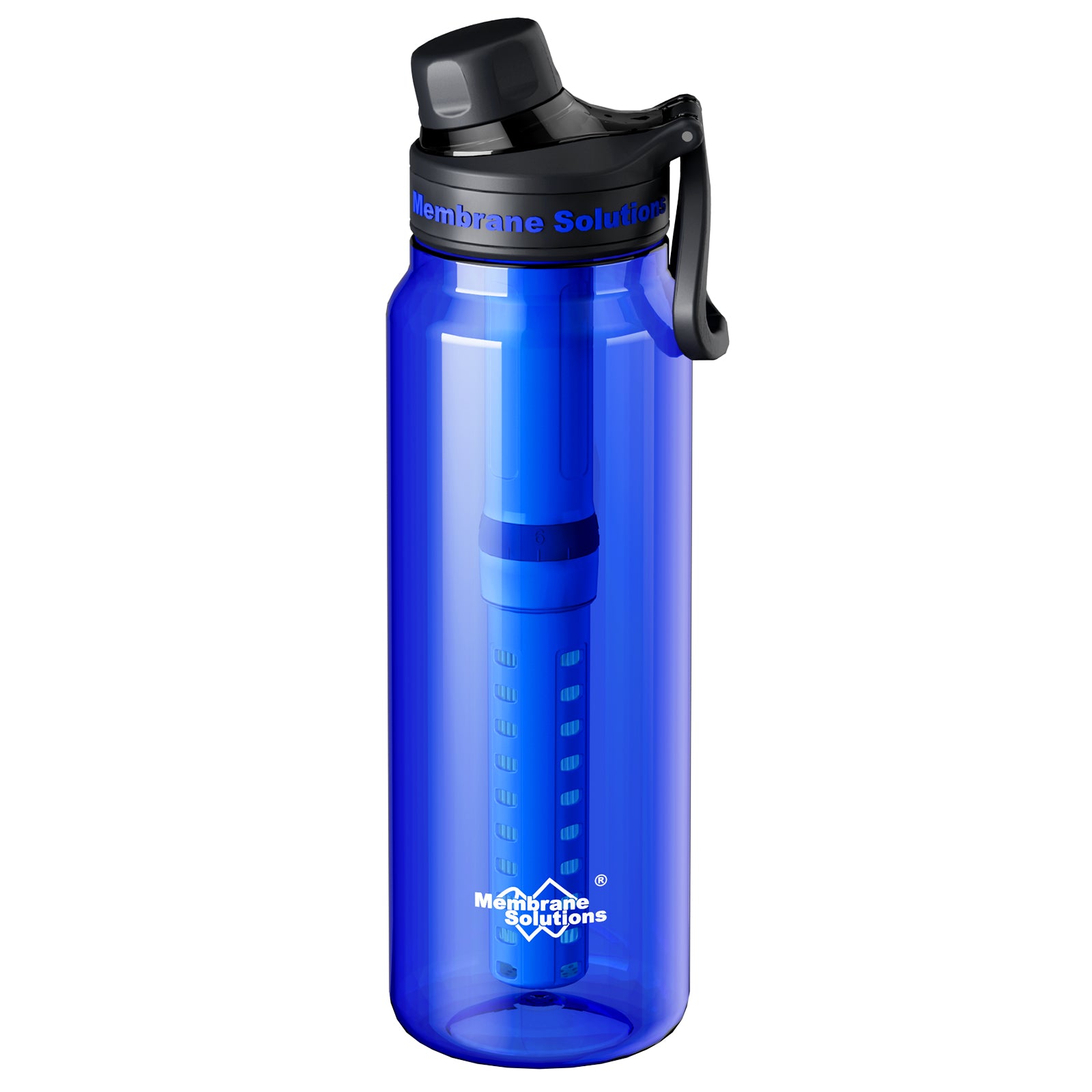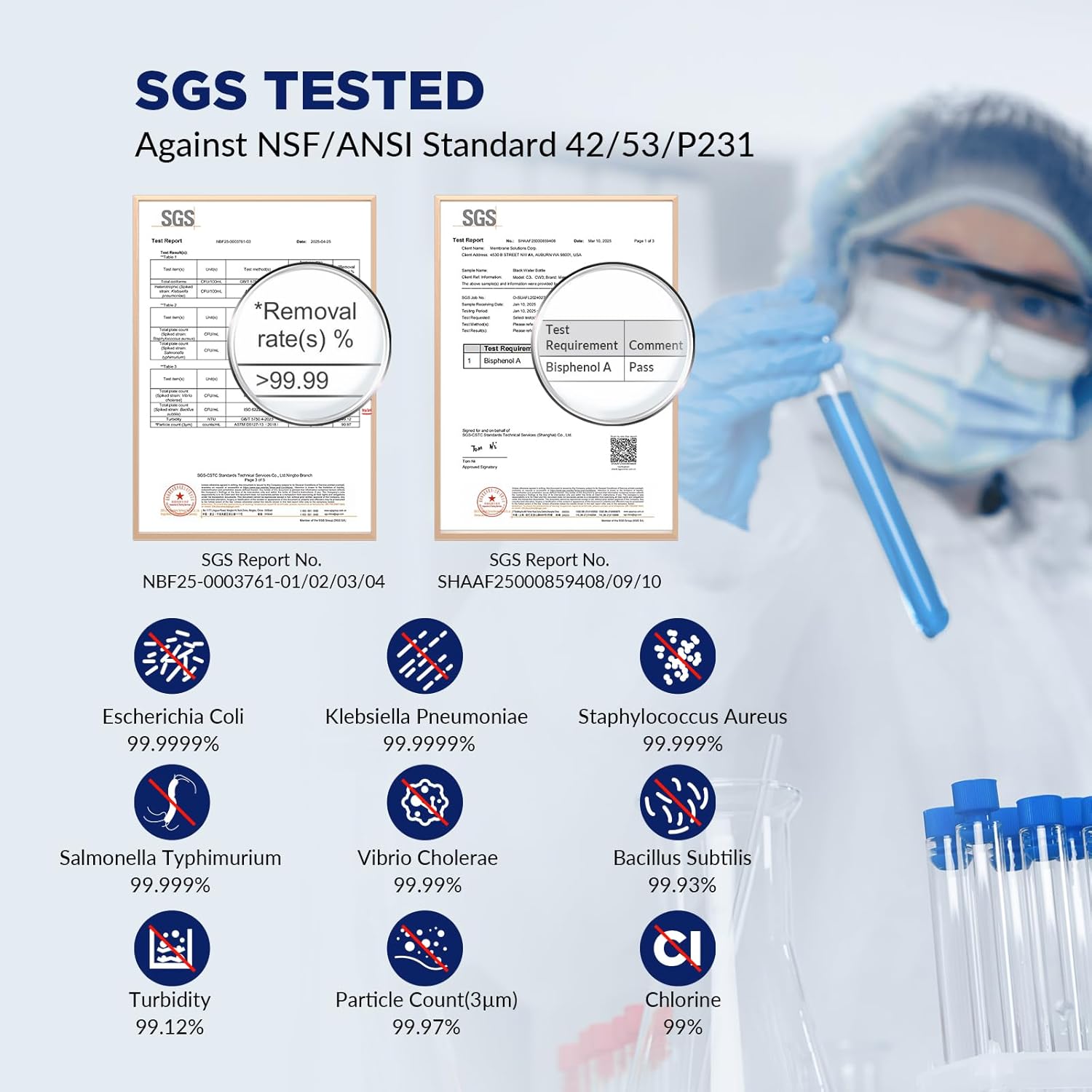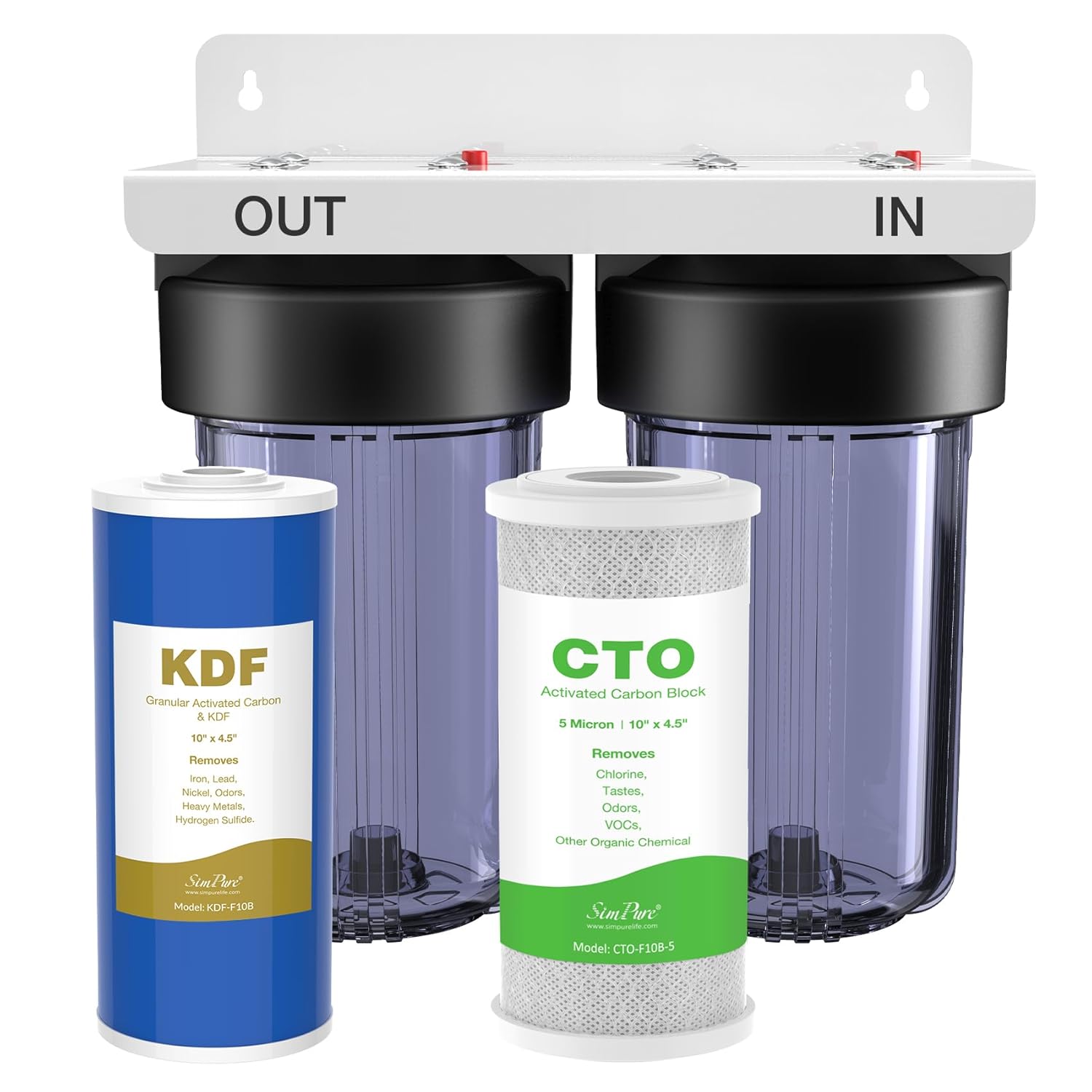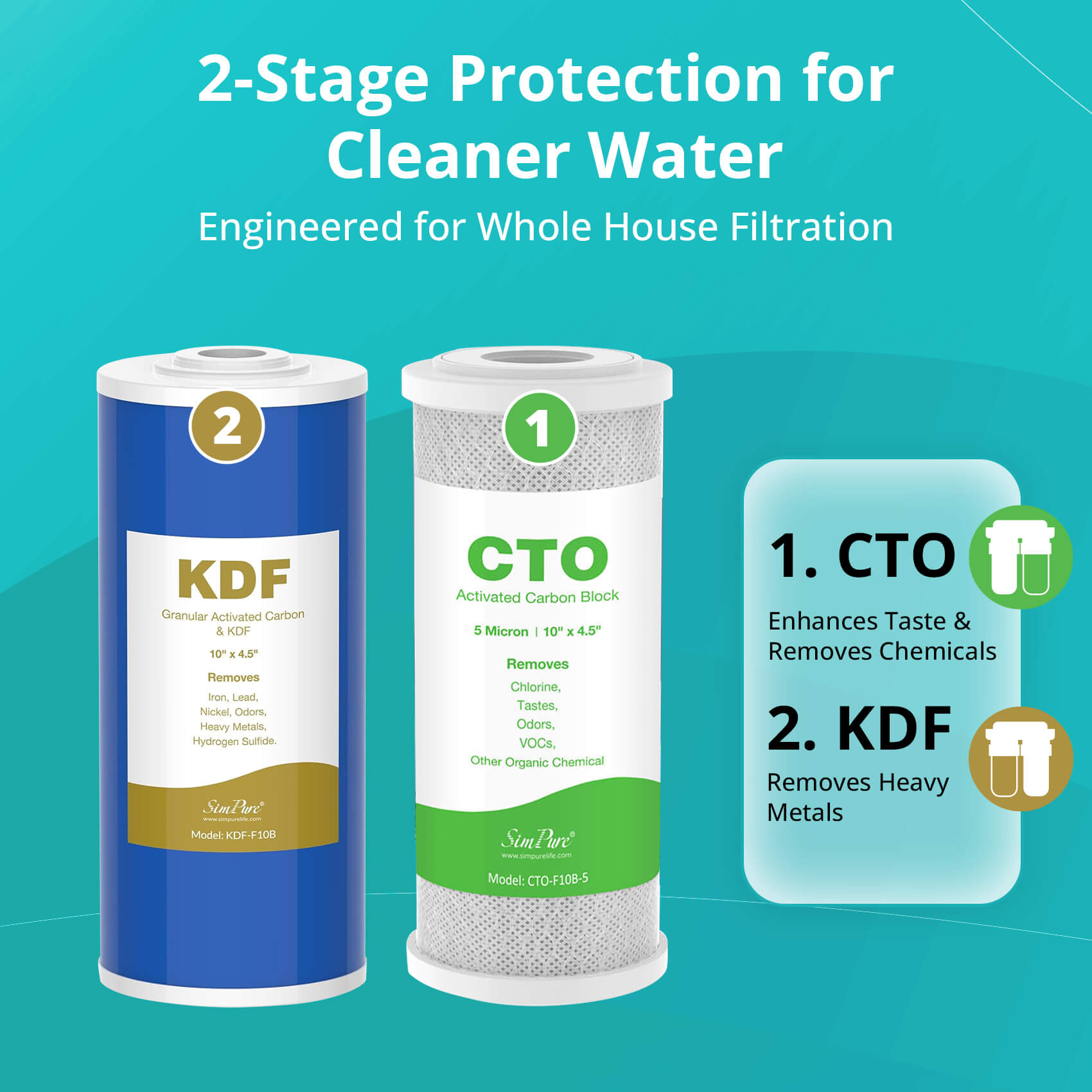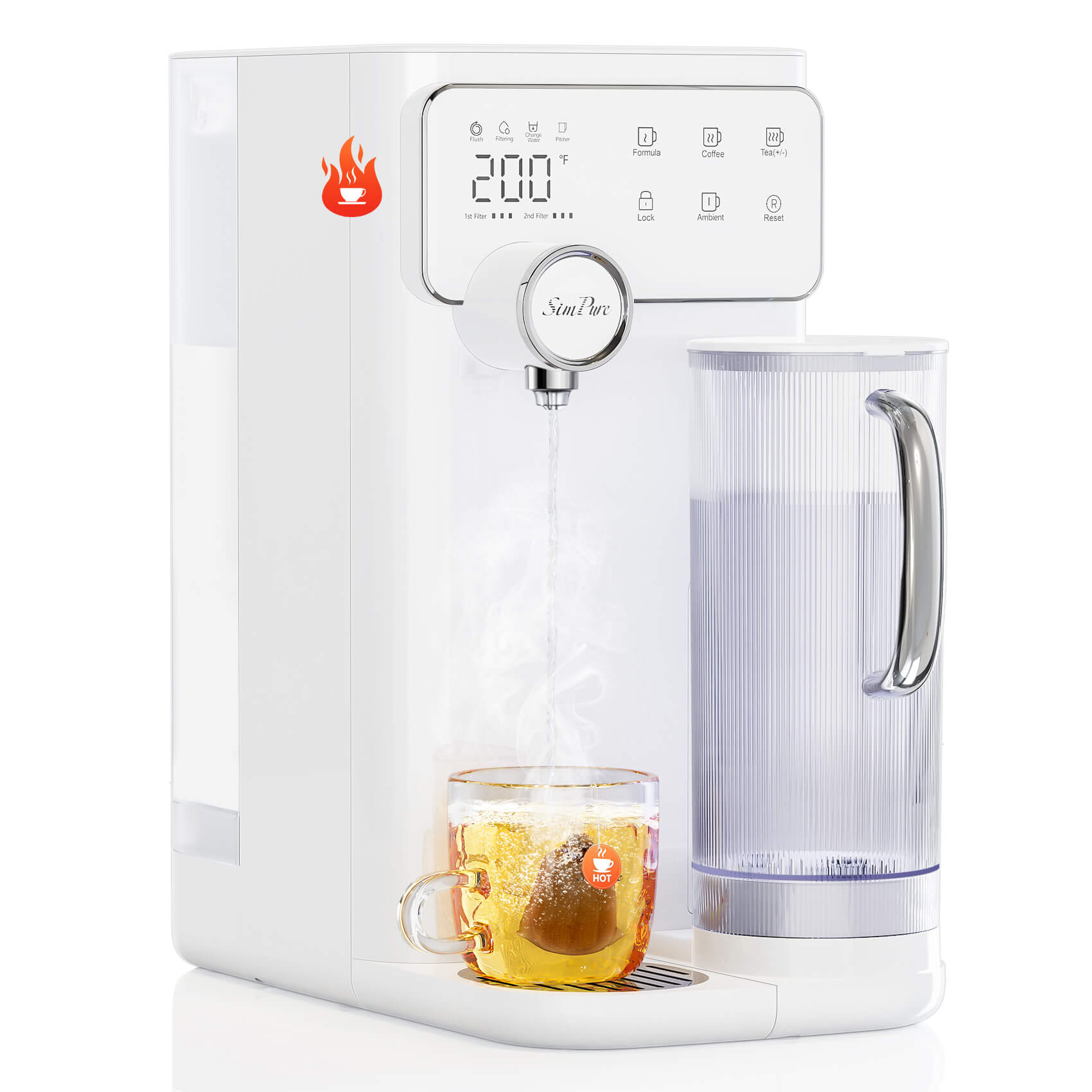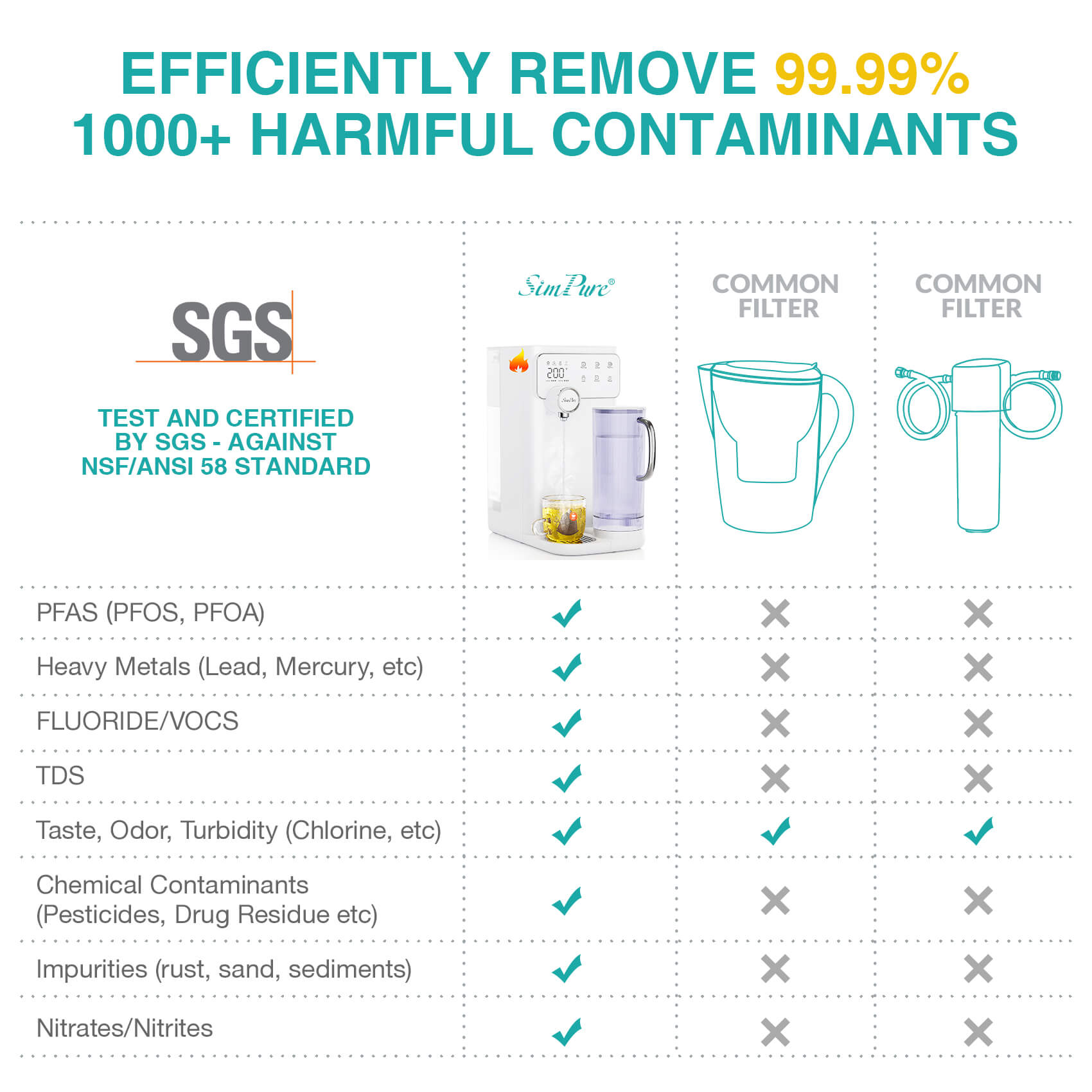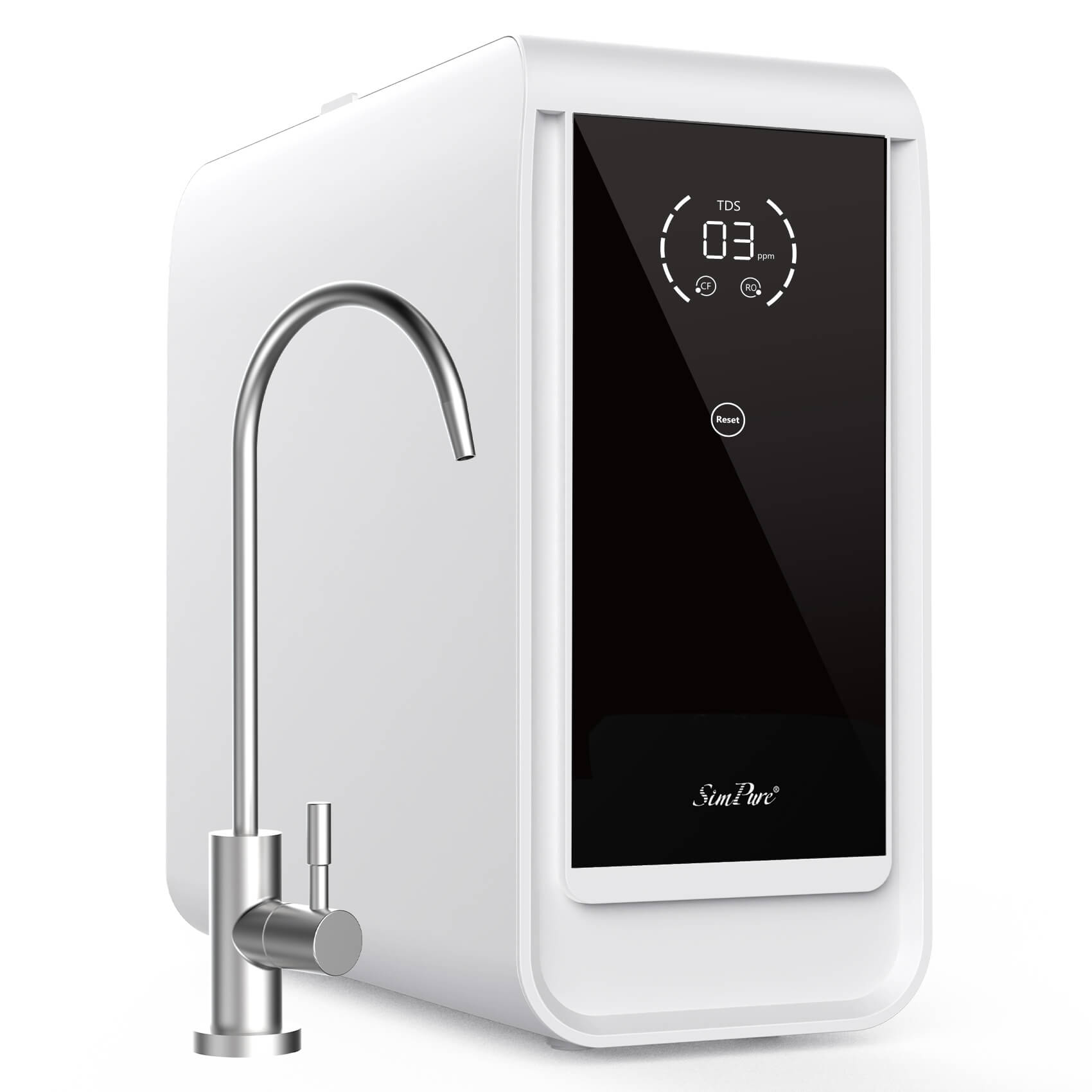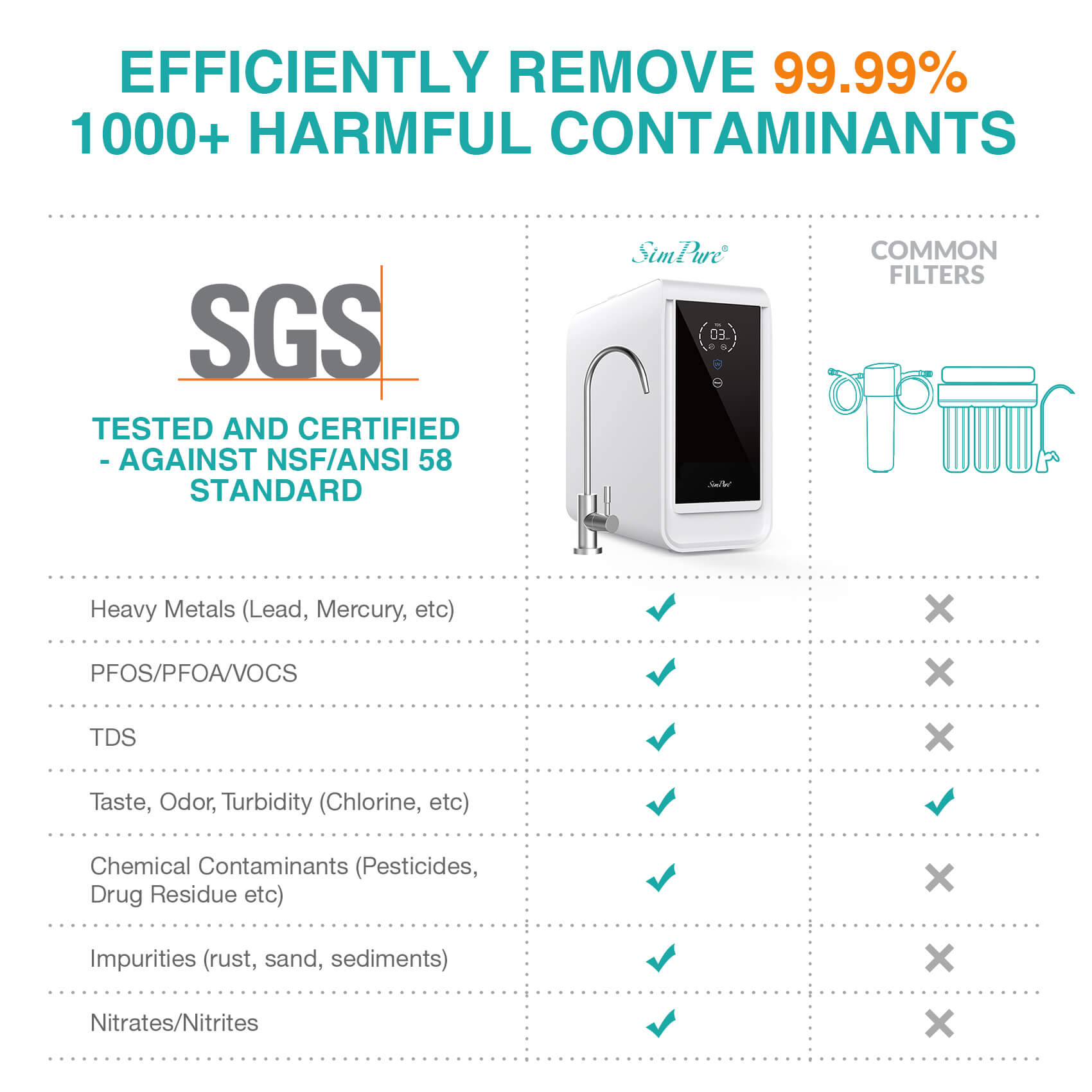A few days ago, a customer complained that the filtered water was not as clean as the original water, and the effluent was too cloudy to be used. Wondering why your reverse osmosis water turns cloudy? Cloudy water can be a common concern for users of water filters and reverse osmosis systems. Different reasons will cause different cloudy. It is best to observe it for a period of time, and it will be easy to solve the problem when we figure out the real reason. In this blog, we will explore the specific reasons and help you solve this problem!
Common Reasons Why Is Filtered Water Cloudy
This cloudiness may be due to machine or water quality issues. It's crucial to pinpoint the exact cause. Avoid unnecessary disassembly and check for sediment, rust, scale, algae, or filter element problems. Let us explore the reasons in the following content:
1. KDF filter in new system releases zinc ions, leading to cloudy filtered water.
The cloudy appearance of white sediment in filtered water is a common occurrence for many users, typically observed in new machines. This cloudiness, often characterized by white bubbles and sediment in the effluent, is primarily due to the KDF filter element, which contains a food-grade copper-zinc alloy. When filtering heavy metals, the KDF element releases small amounts of zinc ions, forming a milky white suspension. While this may make the water appear cloudy, it's not harmful. The cloudiness is proportional to the pollutants in the water and tends to diminish over time with machine use. So, don't be overly concerned about this temporary cloudiness in your filtered water.
2. The first time use of the new water filter causes filtered water cloudy.
When using the new water filter for the first time, many users say that the water has black particles, which is also a common phenomenon in some machines. There is an activated carbon filter element in the water filter (used to absorb different colors and odors in water), which is divided into two types: sintered carbon and granular carbon. In the model container, there is a layer of micro pinholes on the surface of the container, which may cause the powder to flow out and form black particles during use. Activated carbon is food-grade material, safe and pollution-free, and does not affect use. Usually it is a new water filter, or a newly changed filter element has such a situation, so it will gradually improve after 5-10 minutes of automatic cleaning after starting the machine.
3. The water is too hard causing filtered water cloudy.
This cloudy is manifested as transparent scale in the effluent. In some areas, the water filter cannot be used indiscriminately. This is not to say that its filtering effect is not good, but it is related to the water quality in these areas. For example, in some places, the water quality is generally hard (too many minerals in the water), and in some places, the water quality is generally cloudy (too much turbidity), and the effluent has transparent scale, which is caused by the hard water quality. In this case, it is best to use a water softener to soften it first, and then filter it with a water filter, otherwise the scale will be difficult to remove.
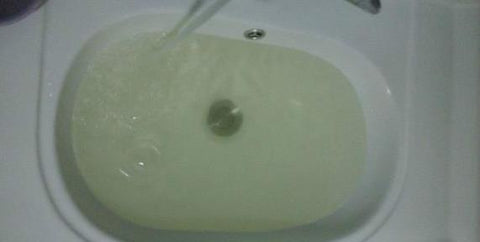
4. The filter element is overloaded or not cleaned and replaced in time, resulting in cloudy.
This situation is generally manifested as different colors and sediment in the effluent. The filtration effect of the water filter is all determined by the efficacy of the PP cotton filter element, activated carbon, compressed carbon, ultrafiltration membrane and other filter elements. If these filter elements are overloaded, the ultrafiltration membrane is ruptured or the sealing ring above the filter element is worn, or if the use limit is reached without cleaning and replacement, the filtration efficiency of the filter element will be greatly reduced, and the effluent will become turbid. The most direct reaction effect is the appearance of abnormal color and odor or sediment. The premise is that the water itself contains these impurities.
Why Is My Reverse Osmosis Water Cloudy?-Top 4 Reasons
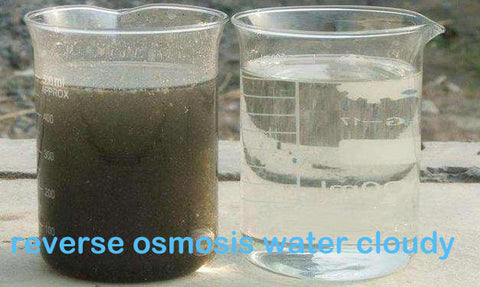
1. Air Bubbles in the RO System
Sometimes, reverse osmosis (RO) water can appear cloudy due to the presence of air bubbles in the system. After squeezing the air, the air flows out with the water, there are small white bubbles in ro water or the outflow toner is black, so it looks cloudy, leading to a milky or cloudy appearance. The presence of air bubbles is usually a temporary issue and can often be resolved by letting the water sit for a while or by flushing the RO system to release the trapped air.
2. Membrane Damage or Deterioration
The RO membrane is a critical component of the RO system that filters out impurities. If the membrane becomes damaged or deteriorates over time, it can allow some impurities to pass through, resulting in cloudy water. Membrane issues may require replacement to restore water clarity and filtration efficiency.
3. Contaminant Breakthrough
In some cases, RO systems can experience "contaminant breakthrough," where certain substances that the membrane should remove begin to pass through. This can lead to cloudiness in the water, as the RO system may not effectively remove all impurities. Regular maintenance and membrane replacement can help address this issue.
4. Microbial Growth Within the System
Microbial growth within the RO system can cause cloudiness in the water. Bacteria or algae can develop on various components of the system, including the membrane or storage tank, and contribute to water cloudiness. To address this problem, it's essential to sanitize and disinfect the RO system periodically, ensuring that it remains free from microbial contamination.
In addition to the various reasons described above, filtered or reverse osmosis water cloudy may also be affected by installation, use, maintenance and other aspects. In addition, the filtered water will also be cloudy if the water filter is not used for a long time. We only need to take out the filter element and clean it. Drain the water in the water filter and backwash it several times. Novice users are best to install and maintain it with the help of a special person, and operate it according to the instructions. Lastly, investing in a high-quality RO system like SimPure Y7P, featuring upgraded 100GPD RO membrane technology for enhanced filtration and longer service life, can ensure consistently clear and pure water, reducing the likelihood of cloudy water issues.


